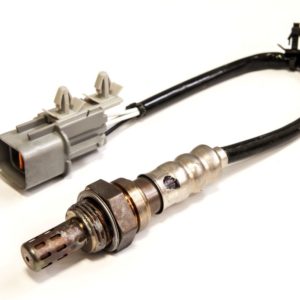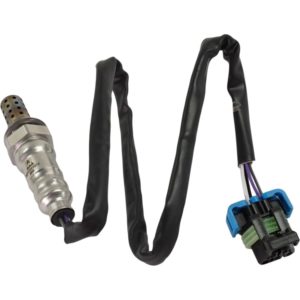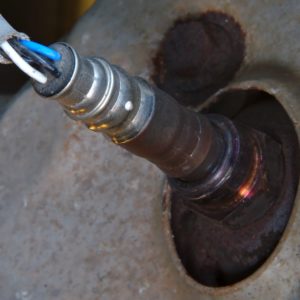So you saw a Check Engine light and got a P0059? This guide will give you an idea of where to start.
What Does the P0059 Code Mean?
Diagnostic trouble code (DTC) P0059 stands for “HO2S Heater Resistance (Bank 2, Sensor 1).” This code may be set when the vehicle’s powertrain control module (PCM) detects that there is an issue with the heater circuit of the oxygen (O2) sensor. It may also be set if the PCM detects a level of resistance from the upstream or pre-catalytic oxygen sensor heater circuit that’s greater than the specified range. The malfunction indicator lamp (MIL) may illuminate when this code is set.
The “Bank 2” in this code’s definition refers to the side of the engine that does not contain cylinder number one. The “Sensor 1” in the definition refers to the sensor closest to the engine assembly.
Note: The definition of code P0059 may be different depending on the vehicle manufacturer. Consult the appropriate repair manual or repair database for the exact code definition.
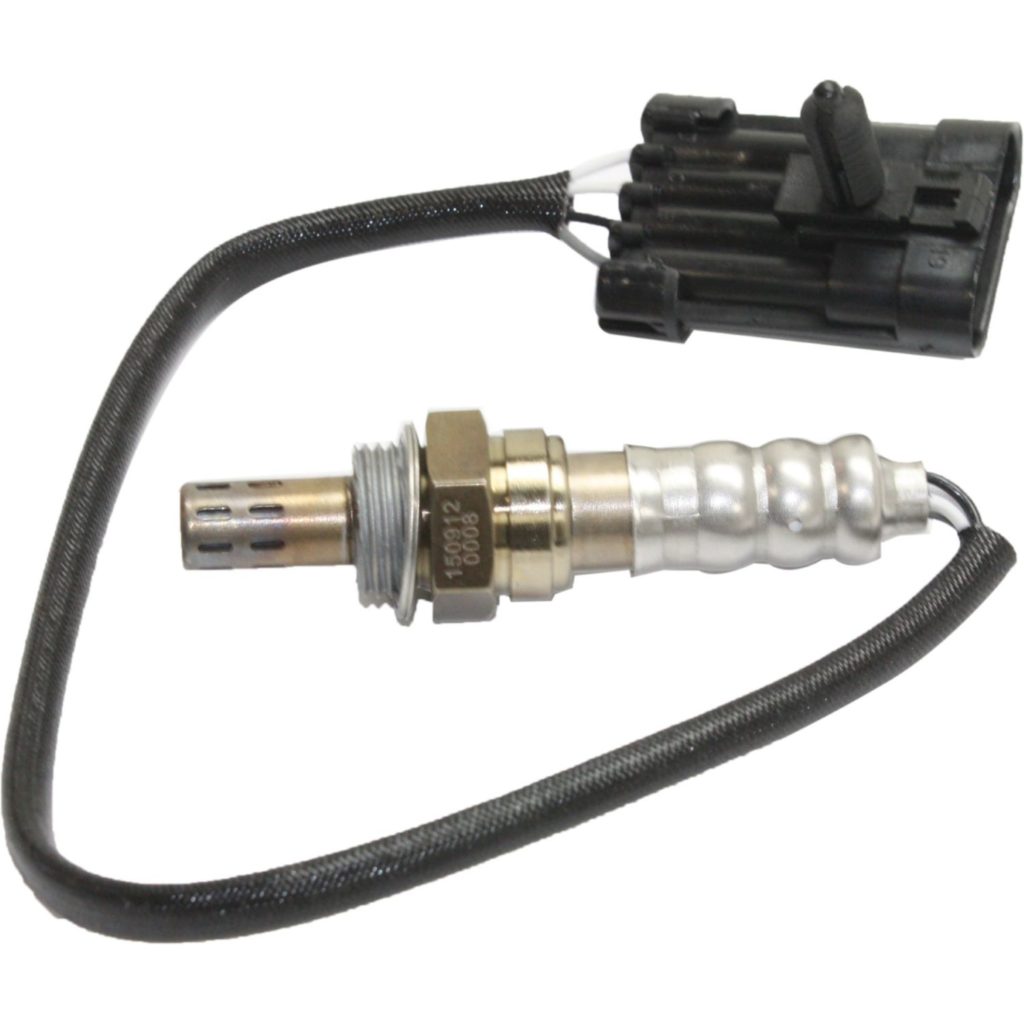
Oxygen sensors are typically mounted in the exhaust manifold or downstream from the manifold, in the exhaust pipe. The vehicle’s computer system uses these sensors to measure the oxygen content in the exhaust.
The sensor behind the catalytic converter is sensor 2 and is referred to as the downstream sensor. This code refers to the primary (upstream) sensor on Bank 2.
The sensor behind the catalytic converter is sensor 2 and is referred to as the downstream sensor. P0059 code refers to the primary (upstream) sensor on Bank 2.
– Richard McCuistian, ASE Certified Master Automobile Technician
Many oxygen sensors have a sensing element inside a metallic housing. This sensing element is made of Zirconium, an electrically-conductive material that’s capable of producing a small voltage when it comes into contact with oxygen.
These sensors also have a heating element that helps them reach their operating temperature faster. Oxygen sensors need to be at a certain temperature for them to produce more accurate readings of the oxygen content in the exhaust. The PCM monitors the oxygen sensor’s heater circuit for unusual activity. When the PCM detects a potential problem with this circuit, it sets the P0059 code. The vehicle’s malfunction indicator lamp (MIL) or check engine light may also illuminate to alert the driver or user of the presence of the issue.
Our guide differentiating bank 1 from bank 2 can help you find bank 2. Meanwhile, more information that can help you understand P0059 can be found in our discussion about the heating process of oxygen sensors.
What are the Possible Causes of the P0059 Code?
Like many trouble codes, there are quite a few reasons why the P0059 engine code may set. Below are just some of the possible causes for this code.

- HO2S failure
- HO2S heater low control circuit is shorted to ground or shorted to voltage
- HO2S connector is damaged
- HO2S heater ignition circuit is open
- HO2S heater low control circuit is open or has a high resistance condition
- PCM failure
What are the Common Symptoms of the P0059 Code?
The P0059 code has a handful of signs that may alert the vehicle’s user or driver of an existing issue. If you experience any of the following codes, it’s best to address the issue immediately to prevent further complications.
- Malfunction indicator lamp (MIL) or check engine light illumination
- Decreased engine performance
- Increased fuel consumption
- A rich running condition
- Other related DTCs may be stored
How to Diagnose the P0059 Code
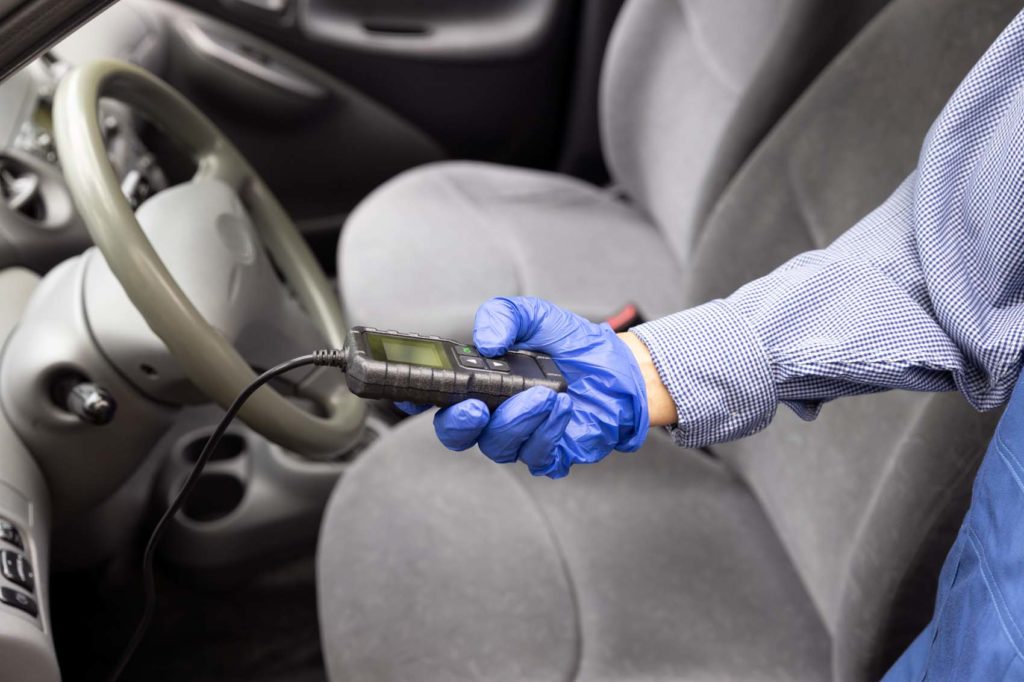
Diagnosing and troubleshooting OBD-II codes such as P0059 can be challenging to many. In order to reach a long-term solution, the root cause must first be determined. However, with the number of possible causes, the troubleshooting process may take up a bit of time and effort.
Trouble code diagnosis may be difficult, but it’s not impossible. Repair manuals and databases offer accurate and specific information about the P0059 engine code repair process. Moreover, they also contain detailed diagrams and illustrations that are easy to follow.
For the visual learner, however, other resources are also available. Various how-to videos and guides written by certified professionals are accessible online.
How to Fix the P0059 Code
As mentioned above, troubleshooting codes such as the P0059 engine code is difficult. This is because no two vehicles are built and oriented the same. The solution for the P0059 code on Chevy Silverados may be different from the solution to P0059 on GMC Sierras. Also, there are a handful of possible causes per trouble code. Troubleshooting will take a lot of time and effort.
For the experienced DIYer, repair manuals and databases may provide them with the information they need to address the issue on their own. However, if you’re not as experienced or confident in your repair skills, it’s better to have a certified mechanic or technician do the repairs for you. This is to avoid mistakes that may lead to even more problems and even more expensive fixes.
Fixing DTC P0059 By Getting a Replacement O2 Sensor For Your Vehicle
Depending on what’s causing your vehicle’s PCM to log DTC P0059, one way to fix the problem is to replace your vehicle’s damaged or dated O2 sensor. Fortunately, getting a replacement that fits your vehicle is easy with CarParts.com.
We make sure to get our sensors from some of the most trusted manufacturers in the industry. Our warehouses are strategically located all over the US, meaning any of your orders will reach you in just a few days.
The best part? You don’t even have to leave your house to get your hands on a new sensor. You can use your mobile phone or computer to visit CarParts.com. Use our vehicle selector and input your vehicle’s details, including the exact year, make, model, and engine. You’ll be done in a matter of seconds.
Check out our collection of high-quality and affordable components at CarParts.com!
Products Mentioned in this Guide
Any information provided on this Website is for informational purposes only and is not intended to replace consultation with a professional mechanic. The accuracy and timeliness of the information may change from the time of publication.


 Oxygen Sensor
Oxygen Sensor
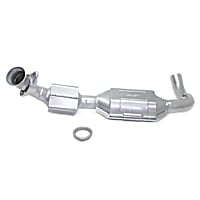 Catalytic Converter
Catalytic Converter
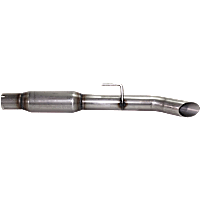 Exhaust Pipe
Exhaust Pipe
 Exhaust Manifold
Exhaust Manifold

